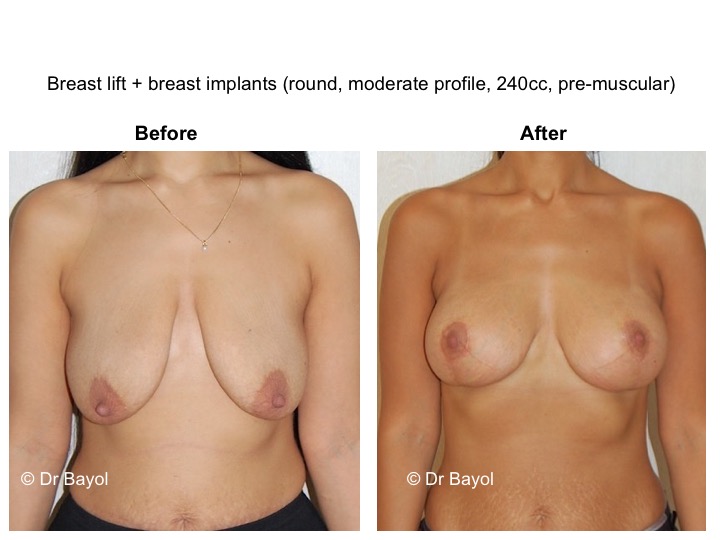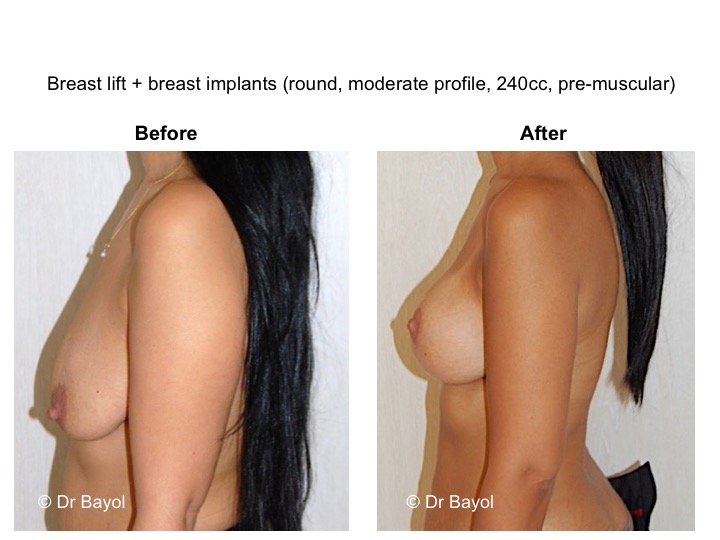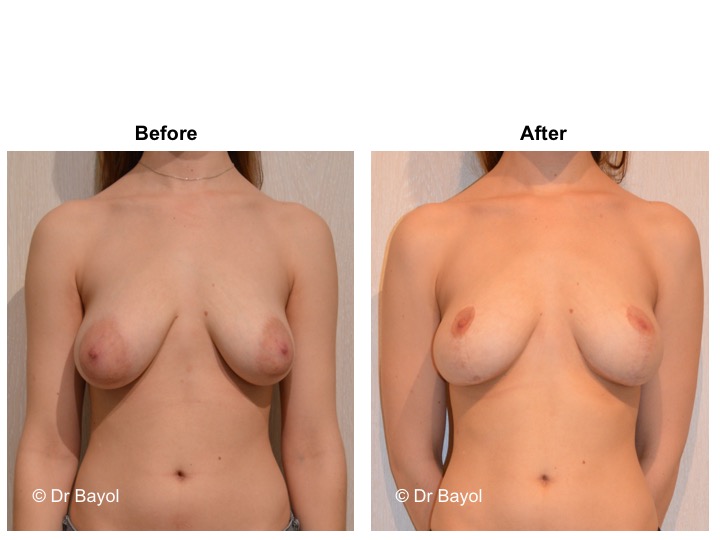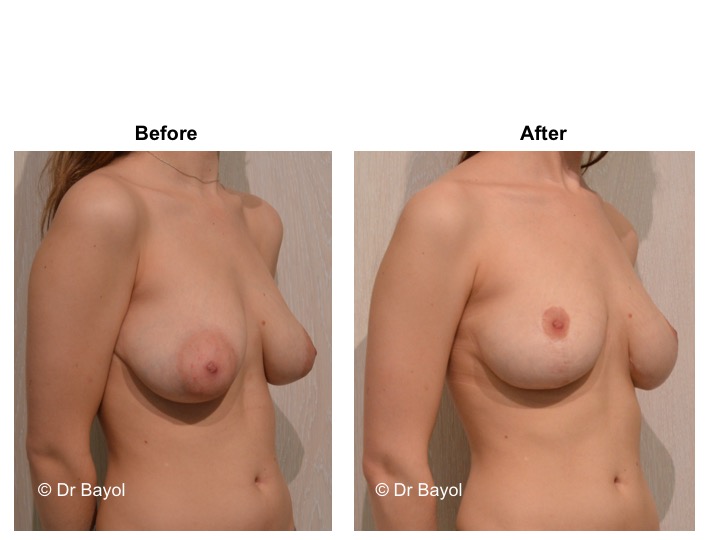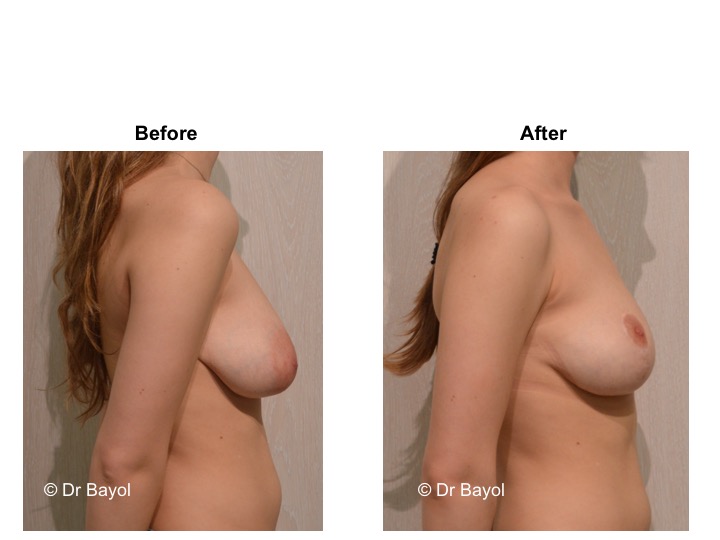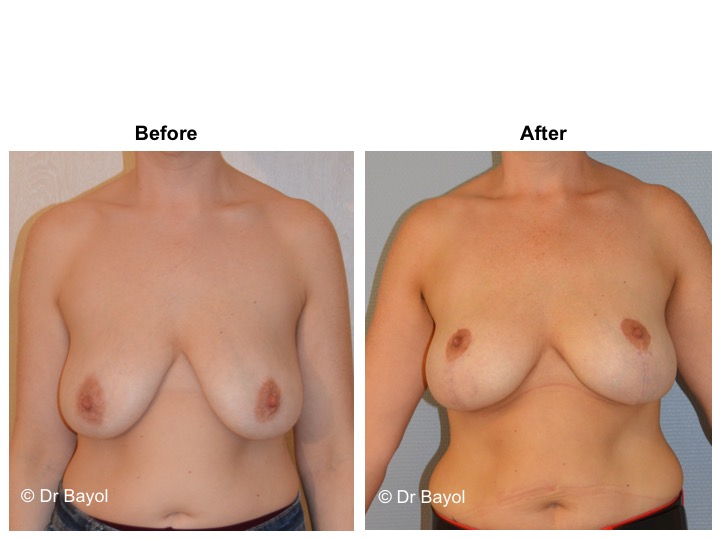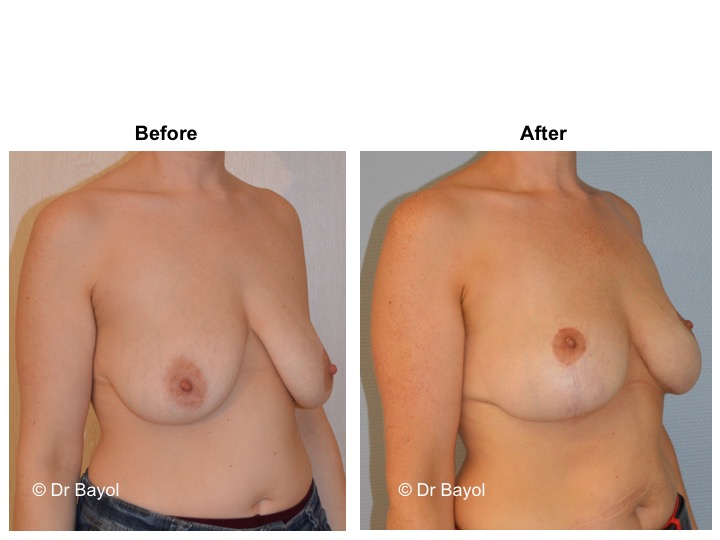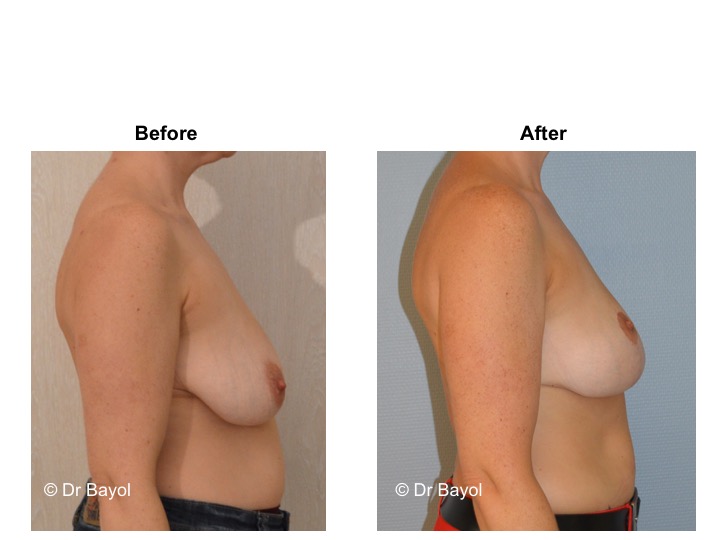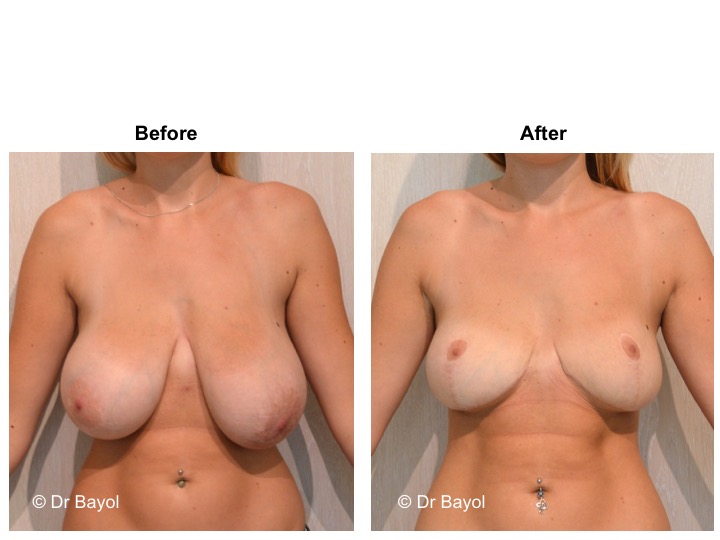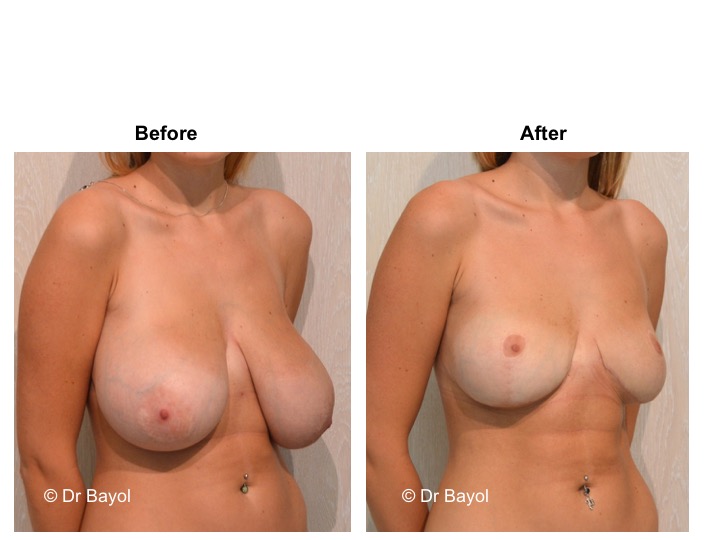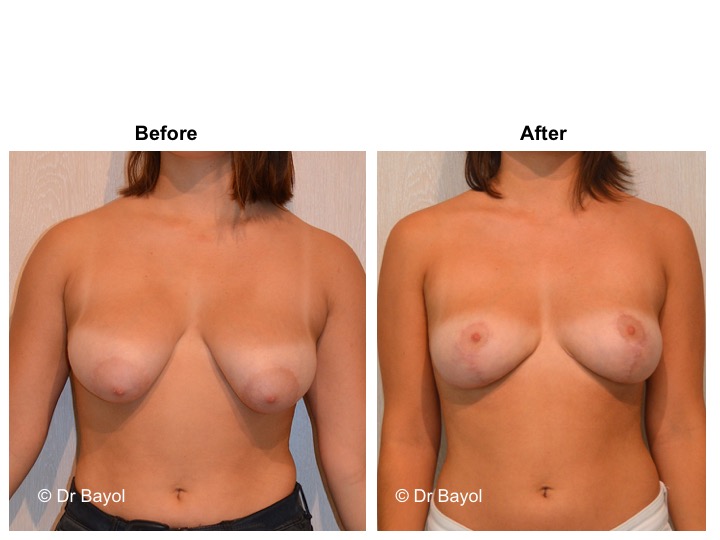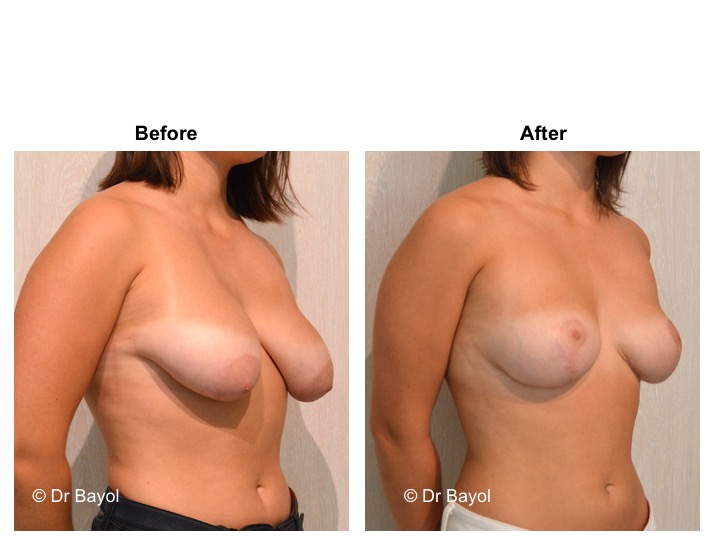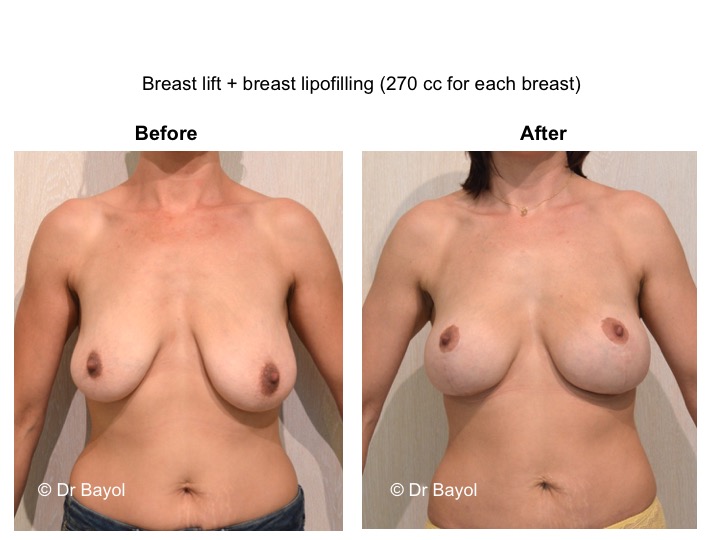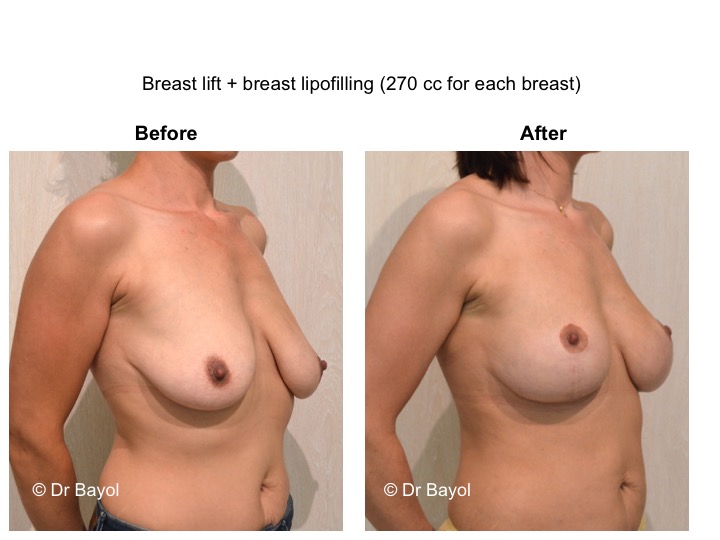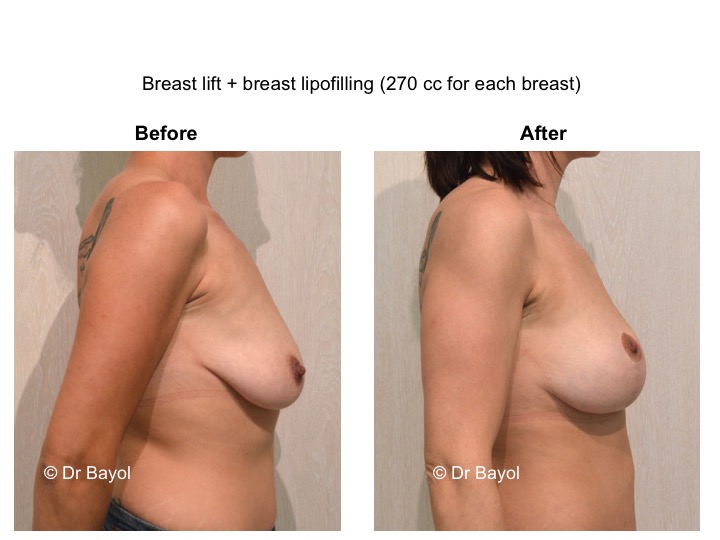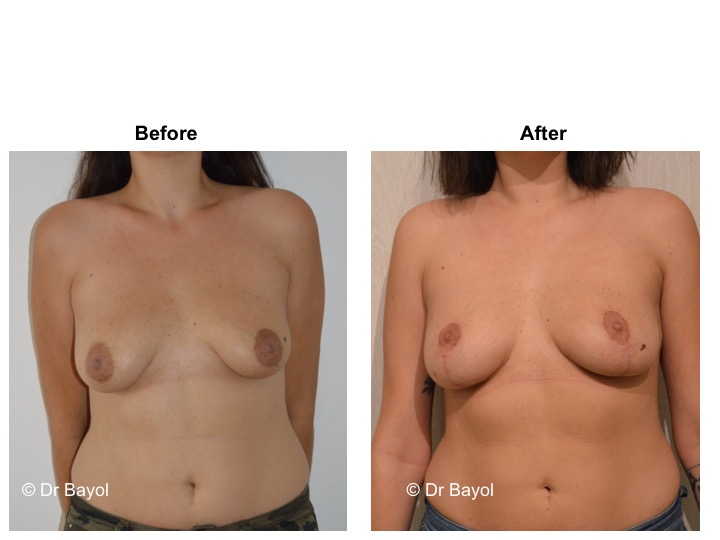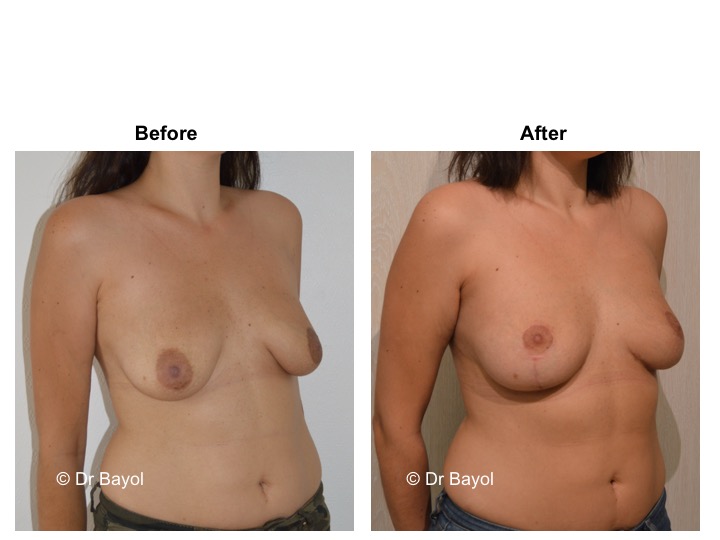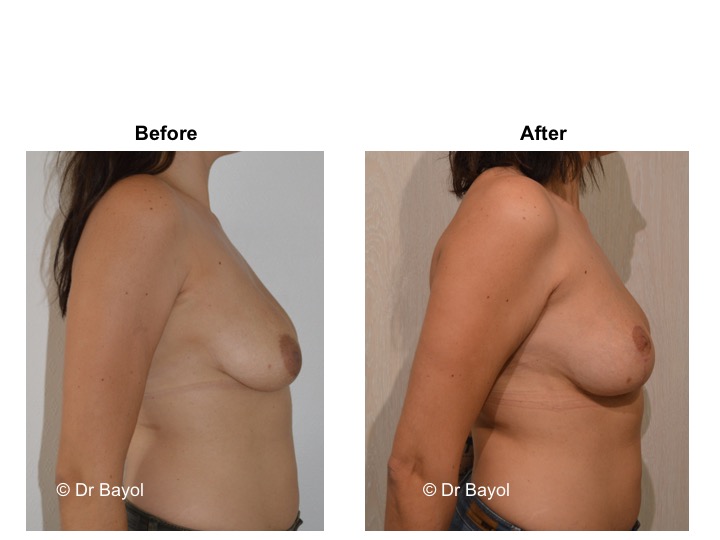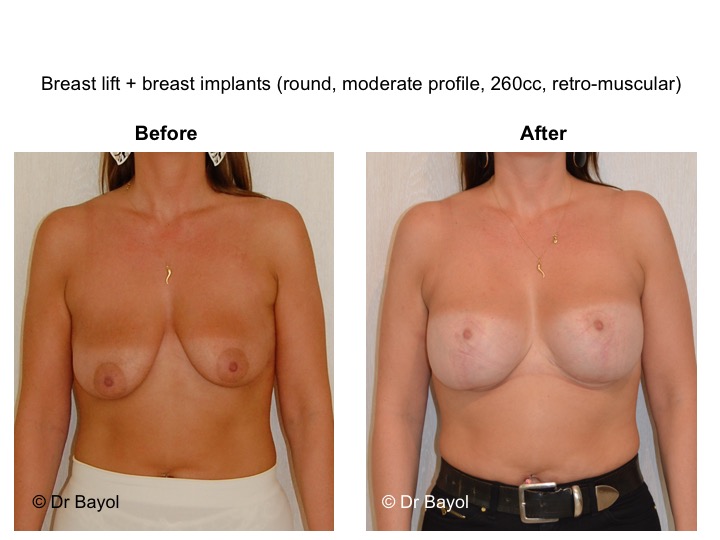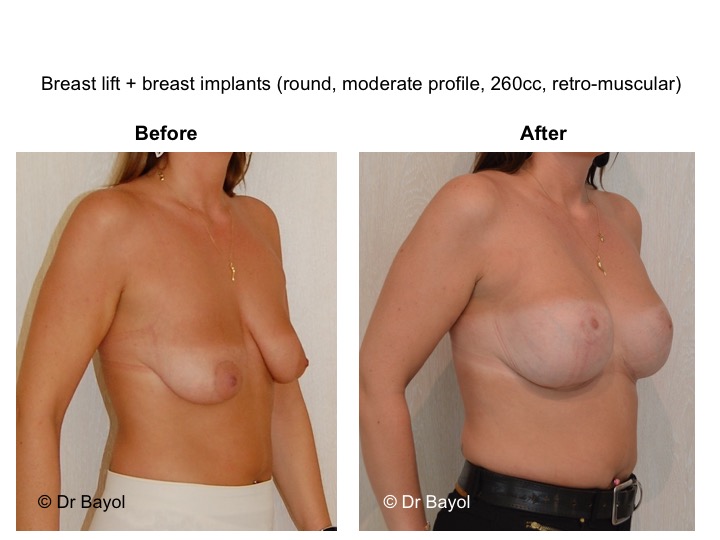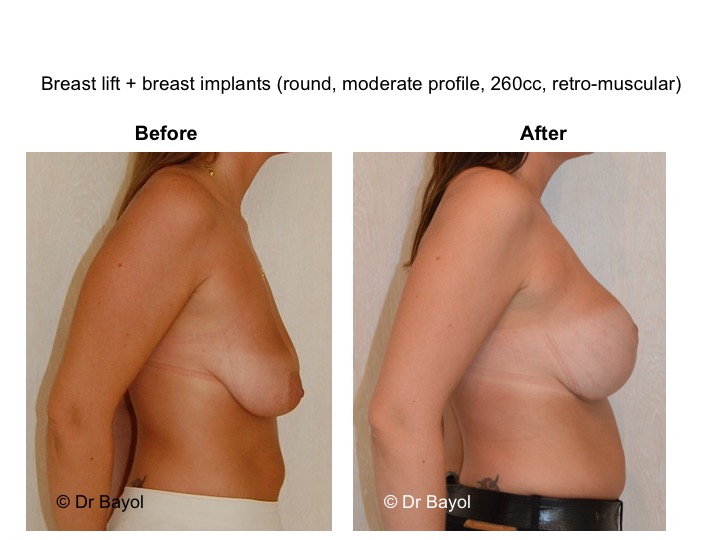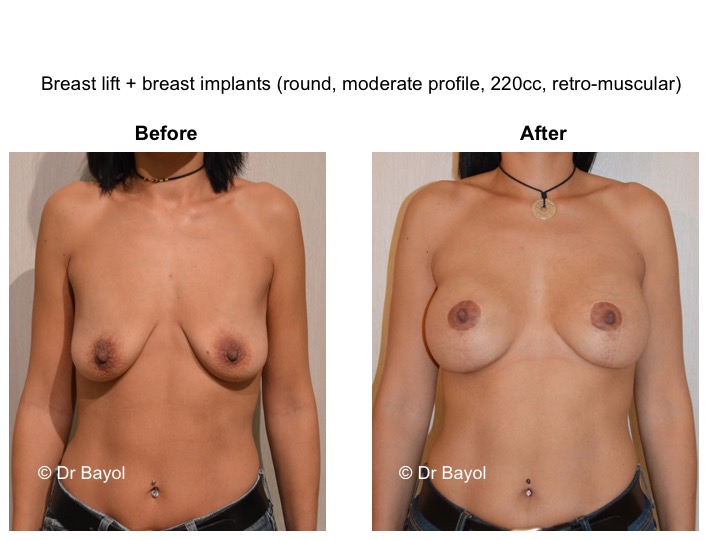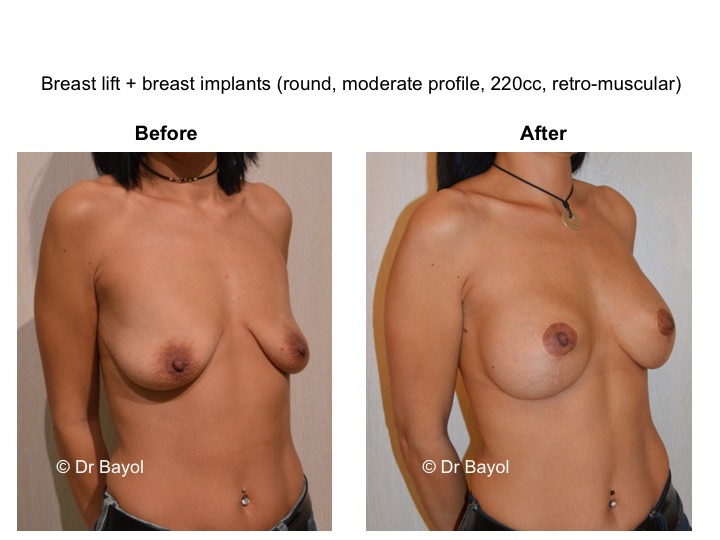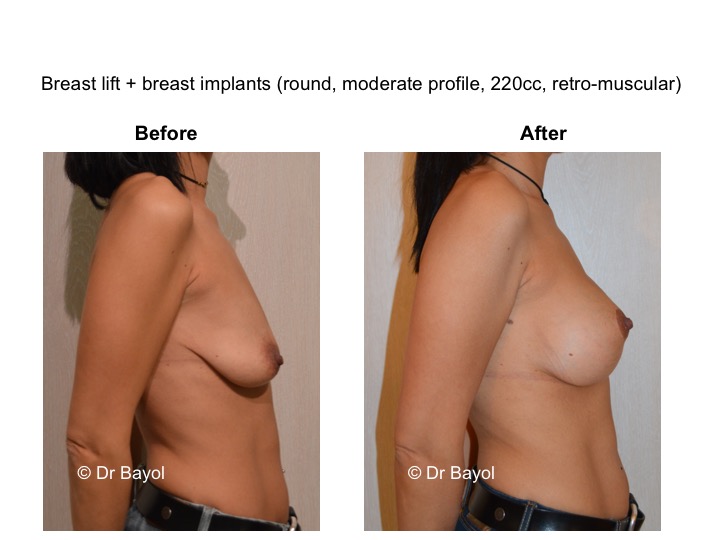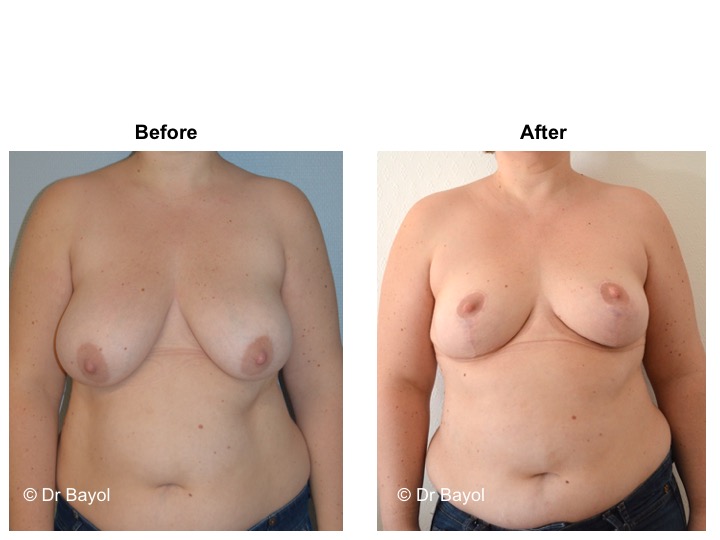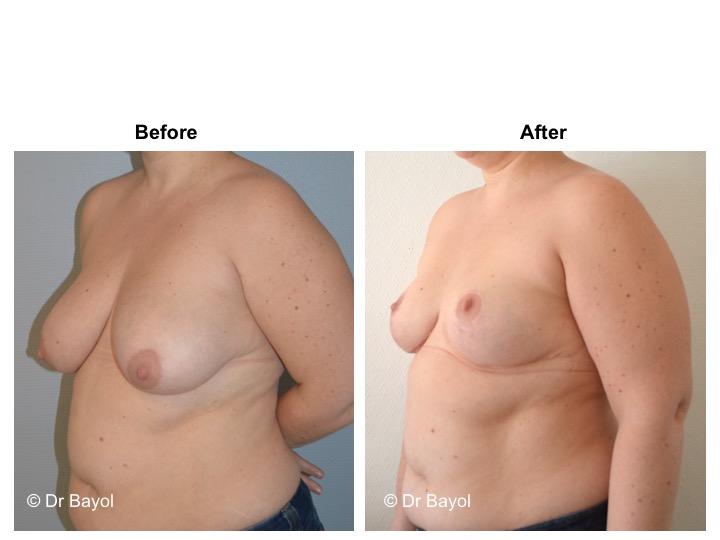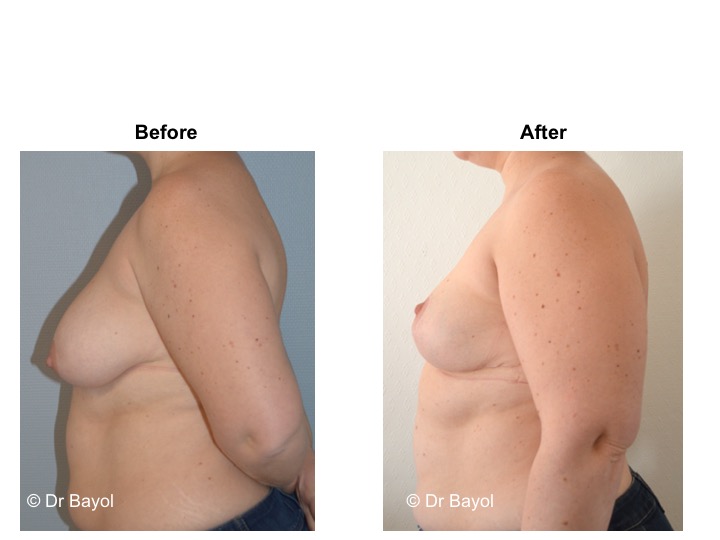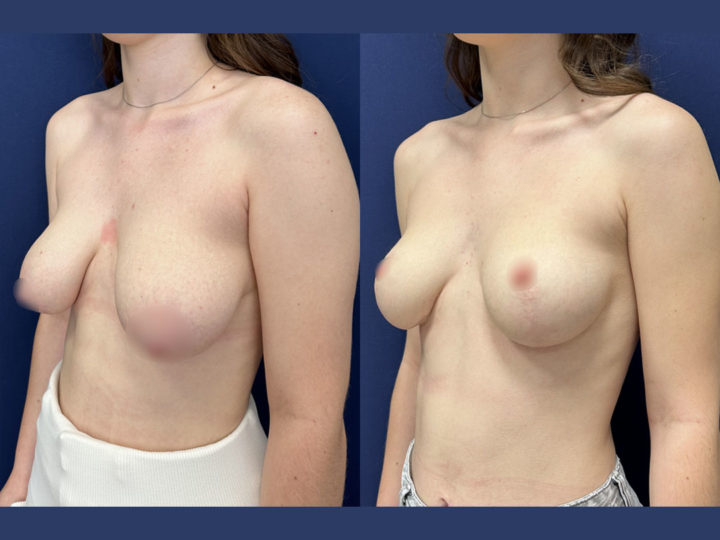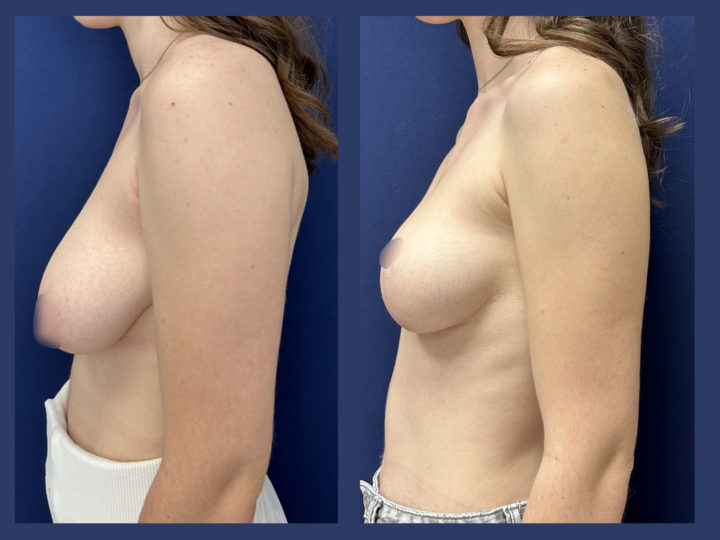The procedure aims to reposition the areola and reshape the breast by focusing on the cutaneous envelope and on the glandular tissue. The gland is concentrated and placed in a proper position.
- To reposition the areola:
The areola is normally located 17 to 19 cm from the clavicle, 9 to 10 cm from the midline, and 4 to 6 cm from the fold under the breast. The cosmetic surgeon will draw a cutting pattern on both breasts before the surgical procedure with the position of the future areola and the excess skin that will have to be removed (Figure 1).
Figure 1: Ideal position of the aerola and preoperative drawing
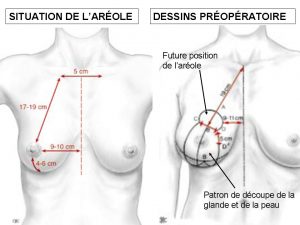
After having created a shred in the mammary gland the first stage of surgery involves ascending the areola and reducing its diameter if it is distended (Figure 2).
Figure 2: Repositioning of the aerola and reduction of its diameter
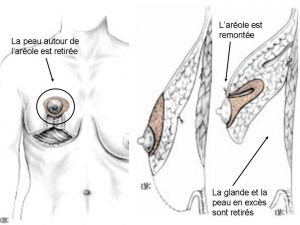
-To remodel the mammary gland and remove the excess skin:
After ascending the areola, the residual glandular volume is ascended, concentrated and remodeled in harmony with the silhouette of the patient and according to her desires.
It is then necessary to adapt the skin envelope, which requires removing the excess skin in order to ensure a good hold and a beautiful shape to the new breast. The edges of the skin which have been cut are sutured at the end of the surgery: these sutures are at the origin of the scars.
In the case of a very large ptosis, the scar has the shape of an inverted T with three components (figure 3): around the areola between the brown skin and the white skin (peri-areolar), vertical between the lower areola and the mammary fold, horizontal concealed in the fold under the breast. The length of the horizontal scar is proportional to the size of the ptosis. However, this scar is shorter compared to the case of a mammary breast reduction for hypertrophy (lien vers “hypertrophie mammaire”).
Figure 3: Inversed T shaped scar
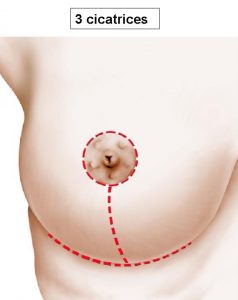
Sometimes, in the presence of a moderate breast ptosis, a “vertical” method can be performed (Figure 4) which allows to eliminate the transverse scar in the fold under the breast and to reduce the scarring to its peri-areolar and vertical components.
Figure 4: vertical scar
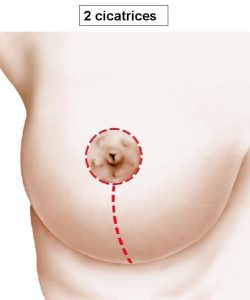
In some cases of very moderate mammary ptosis, it is possible to use a technique that allows correction of the sagging only with a scar positioned around the areola (Figure 5). This method is called “round block”.
Figure 5: peri-areolar or « round block » scar
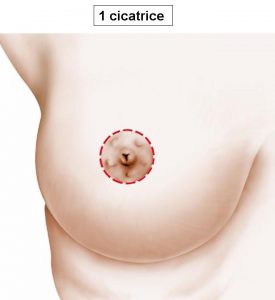
Finally, when ptosis is associated with an insufficient volume (mammary hypotrophy), it may be preferable to set up breast implant during the same surgical procedure in order to restore a satisfactory volume (lien vers “prothèse mammaire”).
Cosmetic surgery of the breast ptosis can be performed from the end of growth and beyond, throughout the patient’s lifetime.
A later pregnancy is of course possible as well as breastfeeding, but it is advisable to wait at least six months after the surgery.
The risk of developing cancer is not increased by this intervention.
Enregistrer






